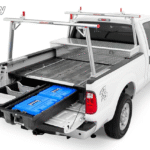Investing in quality safety footwear is one of the most cost-effective ways businesses can protect their workforce whilst lowering operational disruptions and meeting essential health and safety obligations. Understanding the impact of proper footwear on workplace safety statistics and business performance reveals why this investment consistently delivers measurable returns.
Workplace Injury Landscape in the UK
The UK’s workplace injury statistics paint a clear picture of why footwear matters to workforce safety. Slips, trips and falls account for 32% of all non-fatal workplace injuries, according to recent HSE data, making them the single most common cause of major workplace injuries across British industries. These incidents result in approximately 3.7 million working days lost annually, with significant financial implications for businesses and the wider economy. The human cost goes beyond statistics, with workers facing potential long-term disability, reduced earning capacity, and quality of life impacts. For employers, each incident triggers immediate costs, including first aid treatment, incident investigation, potential compensation claims, and replacement worker training.
How Quality Boots Reduce Risk
Modern safety footwear incorporates protection features specifically designed to address the most common workplace hazards. Steel or composite toecaps provide important protection against crushing injuries from falling objects, meeting the stringent 200 joule impact resistance standards required under EN ISO 20345. Midsole plates protect against puncture wounds from nails, sharp metal, or other penetrating objects that could cause severe foot injuries. Perhaps most importantly, slip-resistant outsoles directly address the leading cause of workplace accidents. The updated EN ISO 20345:2022 standard has introduced improved slip resistance requirements, making basic slip resistance mandatory for all safety footwear classes whilst introducing the new LG (ladder grip) marking for improved traction on ladder rungs.
ROI from Safety Footwear Investment
The financial case for quality safety footwear becomes compelling when analysed against injury costs and prevention benefits. With over 604,000 workplace injuries reported in 2023/24, businesses face substantial direct and indirect costs from workplace incidents. Quality footwear lowers these expenses through multiple mechanisms: fewer injury claims, reduced sick leave, lower insurance premiums, and decreased recruitment and training costs for replacement workers. Progressive companies report measurable returns on safety footwear investments within months of implementation. Insurance providers often offer premium reductions for businesses showing proactive safety measures, whilst improved safety records improve tender competitiveness and regulatory compliance. The prevention of a single serious injury typically recovers the cost of equipping an entire team with quality safety footwear, making this investment both financially prudent and ethically responsible.
Selecting the Right Protection Level
Choosing appropriate safety footwear needs careful assessment of specific workplace hazards and task demands. The S3 classification provides protection for environments with puncture risks, combining steel toecaps, midsole protection, and slip-resistant soles. For particularly challenging conditions involving water exposure and demanding terrains, S7-rated footwear offers improved waterproof protection whilst maintaining all standard safety features. Businesses must match footwear specifications to actual hazards instead of adopting one-size-fits-all approaches. Construction sites need different protection levels compared to warehouses or manufacturing facilities. Working with knowledgeable suppliers helps make sure that safety footwear selections align precisely with identified risks whilst providing optimal comfort and performance for daily wear. Regular hazard assessments should inform footwear selection, particularly when work environments or processes change.
Maintaining Footwear to Maintain Safety
Proper maintenance extends footwear lifespan whilst preserving safety characteristics that protect workers. Daily cleaning removes contaminants that could compromise materials, whilst thorough drying prevents moisture-related deterioration. Regular inspections should focus on sole wear patterns, toecap integrity, and upper material condition, as any deterioration could reduce protective capabilities. Worn sole treads compromise slip resistance, potentially nullifying the primary protection against the most common workplace accidents. Damaged toecaps or compromised midsole plates leave workers vulnerable to crush and puncture injuries, respectively.
Establishing clear replacement schedules based on usage intensity and wear indicators ensures consistent protection whilst avoiding the false economy of extending footwear use beyond safe operational limits. Poor maintenance could breach PPE legal requirements, exposing businesses to regulatory liability alongside increased injury risks.







